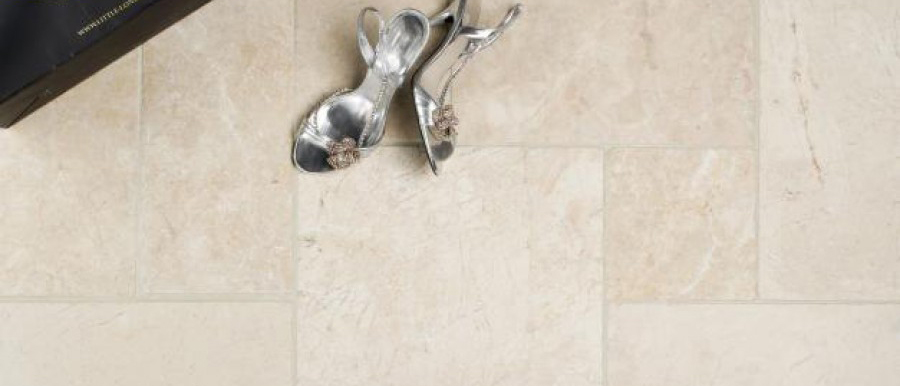
Stone Floor Covering – To cover or not to cover?
Surely you would cover your brand new stone floor whilst work continues in your house? Well, yes you probably would but you must be aware of the pitfalls of covering and not covering.
Clearly if you don’t cover the floor and people march all over it with wet, dirty and gritty boots then yes the floor will get damaged and ingrained with dirt.
“…more problems with stone floor covering than those which have not…”
However it might surprise you to know that I have seen more problems with stone floor covering than those which have not been covered.
How on earth is that? Well firstly its important to note that stone floors always have a degree of moisture in them from the grouting process and are sometimes generally damp if the stone tiles have not been allowed to dry out completely. Most stone is packed wet at the quarry and so contains residual moisture at the point where you bring it into your house.
This moisture is at the root of many problems when a stone floor is covered particularly if a non breathable covering e.g. plastic or correx is used. Stone floor covering makes it sweat and can stain the stone tiles as a result.
Correx?
Correx ( the same material often used to make estate agents signs for example) is particularly tricky as its “fluted” construction means that when it lays flat on the stone floor only the ridges are in contact and an equal proportion of the sheeting is not quite touching you stone tiles. When you take up your specialist stone floor covering you are greeted with a whole floor with fine parallel streaks all the way across it. This is due to unequal evaporation of water from the stone. It looks terrible and is very hard to get rid of. But don’t panic, it will go away in the end but expect to wait several weeks!
Dust Sheets?
You could use some nice clean dust sheets of course but here lies a few other potential hazards. Firstly loose dust sheets over smooth stone floors can be very slippery. Second, the dust sheets will allow spillages straight through onto the stone floor and these may just sit there hidden until the covering is removed by which time the liquid has worked its way into the stone floor making it harder to remove. Thirdly dust sheets are too easily moved around and invariably dust and grit get under the edges and then ground into the stone floor causing scratches as everybody continues to march over the so called “protected floor”.
In guarding against this last hazard, many well meaning customers or contractors will tape down the edges of what ever floor protection they have chosen to use. This is ok with ceramic tiles but should never be allowed with stone flooring. The solvents in the adhesives in products like “gaffa”or “duck” tape will etch the surface of the stone floor and you will see tramlines where the tape has been. This is only restored by mechanically refinishing the stone tiles in situ. Quite understandably this is something well beyond the skill of most tilers or builders. You will need help from a stone flooring specialist.
Clearly then its best to avoid these sorts of issues but you still have to decide whether to have a stone floor covering or not. My advice is if at all possible DON’T COVER THE FLOOR! You won’t get trouble with moisture and because you will have a highly visible, lovely new stone floor everyone will have to be careful with it.
This may seem like wishful thinking but I worked for a company for years who fitted smart kitchens on our new floors and we never had any problems. They had skilled, careful fitters and the jobs were planned in such a way that new floors were fitted only at the end of a programme of works as should be the case.
Any trades having to carry out minor work afterwards could have a temporary stone floor covering, for example to paint skirting boards then take up their dust sheets and sweep up.
Kitchen fitters can protect a section of the stone floor to store their kitchen units until they are in position or to create a working zone but the more of the stone floor left uncovered and swept clean at the end of the day the less grit, nails and screws you will have hiding under the hardboard or dust sheets wrecking you stone tiles.
So not covering your stone floor is the best option but this is only possible if you can organise your schedule so that minimal work is required after the floor goes down.
If you must fit your new stone floor whilst half the house has yet to be plastered and outside its knee deep in mud then there is only one way to cover it… PROPERLY!
Once you cover a floor you can be sure that everyone will feel free to make a mess, drop tea bags and generally not clear up – you have to protect against this abuse and from the issues relating to moisture mentioned above.
Stone floor covering – done properly
- Firstly make sure the stone floor is completely dry and spotlessly clean before it is covered. Despite the pressures of a building schedule this may mean the stone floor has to be left uncovered for a couple of days.
- Cover the stone flooring completely with new dust sheets or ideally a professional floor protection fleece. This is your soft layer.
- Now you need a hard layer for impact protection and for protection from spilled liquids. Lay sheets of correx, ply or hardboard over your softening, tape the sheets together with strong tape but do not tape to the floor except perhaps to the last 10 or 15 mm of floor around the edge which will later be covered with skirting boards. Alternatively tape to the wall. You have to prevent dirt and grit getting under the protection onto the stone tiles.
- Lastly, tell everyone on the job to be careful with your lovely new stone floor.
You can see some examples of some really nice stone flooring here.




